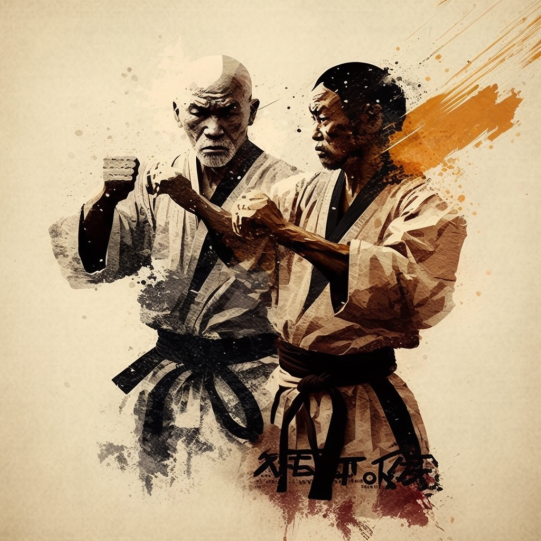
Is Kempo the Same as Karate? Understanding the Differences
Posted: February 22, 2023
Kempo and Karate are two martial arts that have many similarities, which can make it confusing to understand their differences. While they share some common techniques and training principles, they also have distinct characteristics that set them apart.
In this article, we will explore the differences between Kempo and Karate, so that you can have a better understanding of these two styles.
Origins and History
Kempo, also known as Kenpo, is a martial art that originated in China and later spread to Japan and other parts of the world. The word "Kempo" is derived from the Chinese words "quan fa," which means "fist law" or "boxing method."
Historically, Kempo can be traced back to the Shaolin Temple in China, where Buddhist monks developed various fighting techniques to defend themselves against bandits and other attackers. Over time, these techniques evolved into different styles of Kempo.
In the late 19th and early 20th centuries, Kempo was introduced to Japan by martial artists who had trained in China. In Japan, Kempo continued to evolve and was influenced by other martial arts such as Judo and Karate.
One of the most prominent figures in the history of Kempo is James Mitose, who is often credited with bringing Kempo to the United States in the 1940s. Mitose, who was born in Hawaii and trained in Japan, founded the "Official Self-Defense Club" in Honolulu, which was one of the first Kempo schools in the United States.
Today, Kempo is practiced around the world and has many different styles and variations. Some of the most well-known Kempo styles include Kenpo Karate, Shaolin Kempo, Kosho Shorei Ryu Kempo, and American Kempo. Each of these styles has its own unique techniques, forms, and philosophies, but they all share a common origin in the martial arts of China.
Karate is a martial art that originated in the Ryukyu Kingdom, which is now known as Okinawa, Japan. Its origins can be traced back to the early 17th century when Okinawa was under the rule of the Satsuma samurai clan of Japan.
During this time, Okinawa was a trade hub between China, Japan, and other Southeast Asian countries, and it is believed that karate was heavily influenced by Chinese martial arts, which were brought to Okinawa by Chinese traders and diplomats.
In the 19th century, karate continued to develop and evolve, with various styles emerging such as Shuri-te, Naha-te, and Tomari-te. These styles were influenced by different regions of Okinawa and had their own unique characteristics.
In the early 20th century, Gichin Funakoshi introduced karate to mainland Japan and founded the Shotokan style of karate. This marked the beginning of karate's spread throughout the world, as many other karate masters also traveled and taught their styles in other countries.
Today, karate is a popular martial art practiced by millions of people around the world. It has also become a competitive sport, with the inclusion of karate in the 2021 Summer Olympics in Tokyo, Japan.
Techniques and Training
Both Kempo and Karate emphasize striking techniques, such as punches and kicks, as well as blocks and throws. However, Kempo also includes joint locks and grappling techniques, which are not typically found in Karate.
In addition, Kempo training often incorporates weapons training, such as the bo staff and nunchaku. Karate, on the other hand, traditionally focuses on empty-hand techniques.
Forms and Philosophy
Both Kempo and Karate use forms, or kata, to teach and reinforce techniques. These forms are a series of pre-arranged movements that are designed to simulate a fight against one or more opponents.
The philosophy of Karate is often described as "the way of the empty hand," emphasizing humility, respect, and self-control. Kempo, on the other hand, is often associated with the principle of "using your opponent's strength against them," emphasizing adaptability and flexibility.
Belts and Ranking
Kempo and Karate both use belt systems to rank students' progress and skill level. In both styles, students typically start with a white belt and progress to higher levels, with black belt being the highest level.
However, the ranking systems and belt colors used in Kempo and Karate may differ. For example, some Kempo schools may use different belt colors or have a different number of ranks.
In conclusion-
While Kempo and Karate share some commonalities, such as striking techniques and the use of forms, they also have distinct differences in their origins, techniques, training, philosophy, and ranking systems. Understanding these differences can help you make an informed decision when choosing a martial arts style that is best suited for your interests and goals.
If you're interested in learning more about Kempo or Karate, consider visiting a local martial arts school and speaking with an instructor or watching a class. This can give you a firsthand look at the techniques, training, and philosophy of each style.
